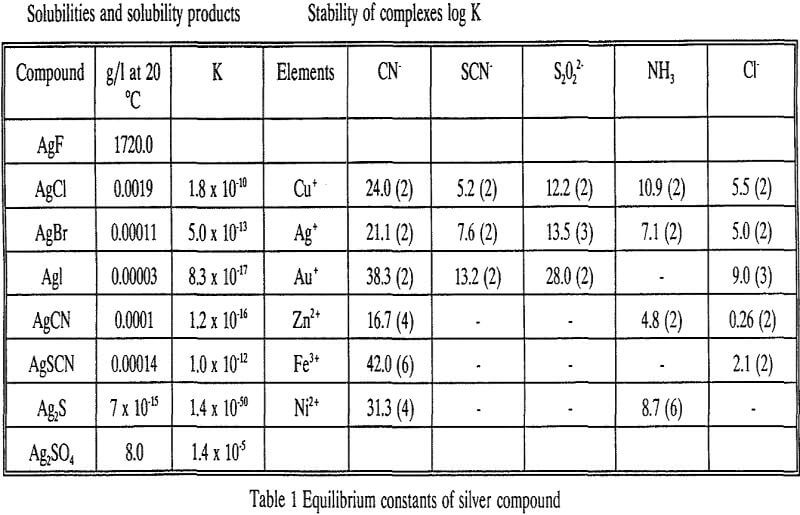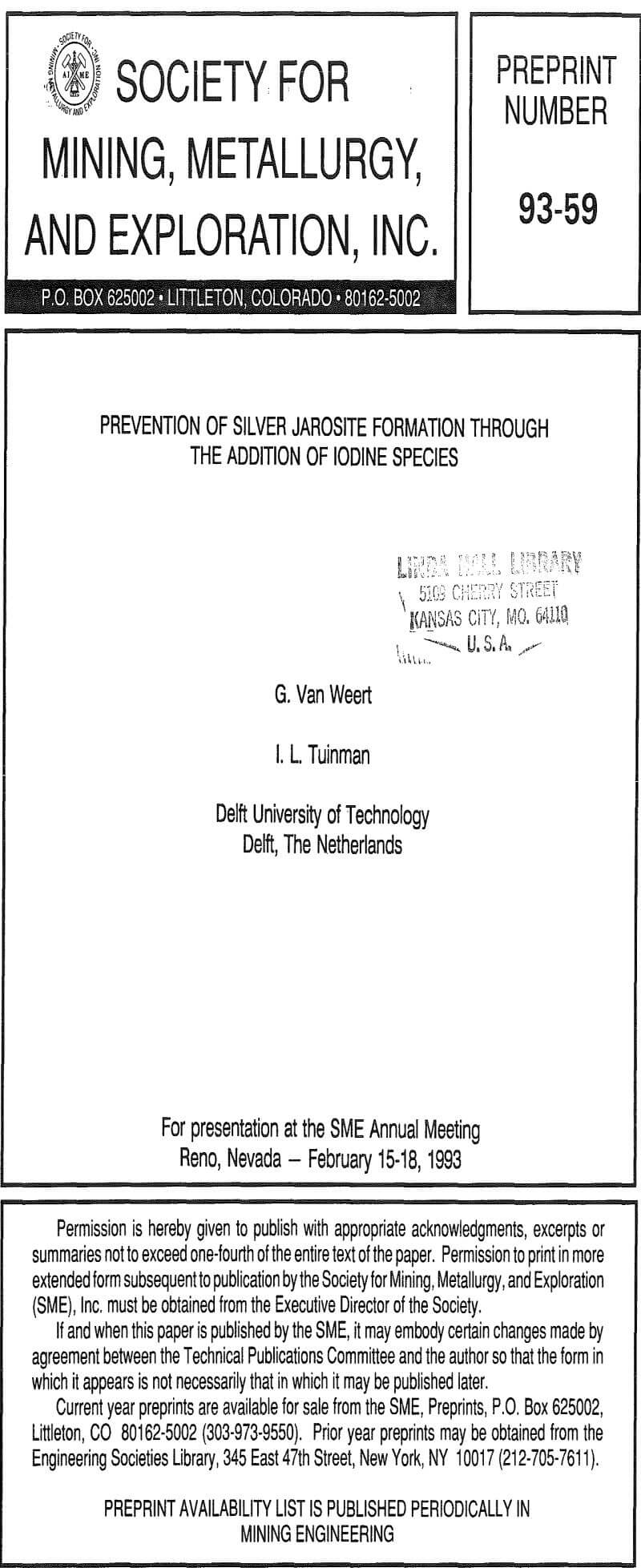Pressure oxidation of refractory (arseno)pyrites results in residues from which nearly all the gold can be recovered. This is not the case for silver. Under prevailing autoclave conditions, which favour hydrolysis and precipitation of ferric iron, the silver becomes associated with jarositic species, limiting its subsequent cyanidation to less than 10 %. Effective enhancement of the silver extraction can be achieved by atmospheric conditioning of the oxidized pulp for 1 to 2h at 90°C with lime to decompose the jarositic species. Lime requirements are appreciably higher than for the normal ambient temperature neutralization and pH adjustment prior to cyanidation, so that the applicability of a silver extraction enhancement treatment will depend on the grades and the relative improvement in the silver recovery. Generally, not enough silver is present in the ore to justify a hot lime step. There are enough exceptions however, to warrant investigation of process variants, which do not require a separate treatment step to render the silver soluble by cyanidation.
Work has been reported on the oxidation of an artificial mixture of argentite, pyrite and silica. The formation of refractory silver jarosite could only be avoided by the adoption of extreme process conditions, i.e. a. over 190°C operating temperature where iron precipitates as hematite, b. acidity levels above 0.75 moles H2SO4 per liter, or c. the addition of high levels of potassium sulphate – 32 kg/tonne “ore”. The latter condition did not prevent jarosite formation; it prevented the inclusion of silver in the jarosite formed. Sodium and ammonium were found not to be effective.
This work describes the prevention of silver jarosite formation through the addition of iodine species to the oxidation process. Silver iodide has the lowest solubility product of all silver halides (Table 1), but is nevertheless still soluble in cyanide solutions.
Argentojarosite is easily synthesized from a slurry of Ag2SO4 and Fe2(SO4)3 with a pH of 1.15 at 160°C, pO2 = 10 atm and ptot = 16 atm. The composition of this jarosite is given by the chemical formula:
Ag0.9H3O0.1Fe3(SO4)2(OH)6
The reaction rate is the highest in the beginning; in fact most jarosite is formed before the temperature reaches 160°C. If AgI is added to the slurry instead of Ag2SO4, hydronium jarosite is formed.
If Ag2S is added to the slurry with a source for iodide, a mixture of AgI, argento and hydronium jarosite is formed. When the slurry consists of Ag- jarosite and HI and contains sufficient sulfate, the product mixture has the same constituents. The mole ratio of iodide species to silver necessary to lose less than 5% of the silver to the jarosite phase during Ag2S oxidation is about 5. With a ratio of 2, the percentage of silver lost to the jarosite is about 16%, and if the ratio is 1, only about 50% of the silver forms AgI. Although most reports on cyanide leaching of silver containing jarosites state that the silver recovery is very poor, pure argentojarosite reacts easily with a 5% NaCN solution.
